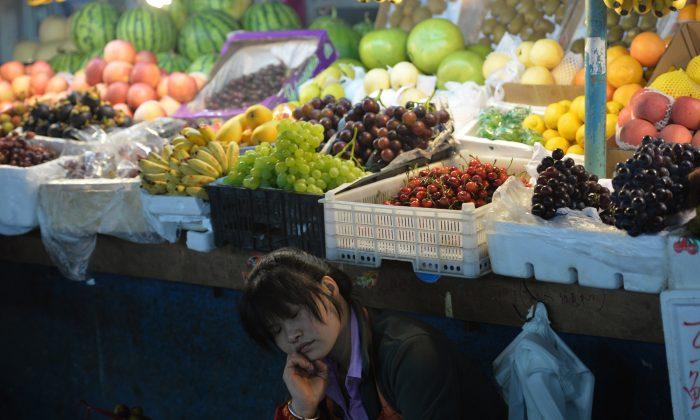Two key measures of economic activity in China point in different directions, with one indicating the cost-of-living is rising and the other indicating economic activity is slowing. This adds up to bad news for the Chinese people.
Data released on July 9 by China’s National Bureau of Statistics shows that the consumer price index (CPI) increased 2.7 percent year-on-year (YoY), which is higher than 2.1 percent YoY increase registered in May. Food prices climbed 4.9 percent YoY, while the non-food prices were up 1.6 percent YoY. The index increased by 2.4 percent over the first six months compared with a year earlier.
The producer price index (PPI) fell by 2.7 percent in June when compared to the same month in 2012, more than the market expectations of a 2.6 percent drop. The June PPI reading marked the 16th month of decline in a row, the longest duration of this index falling in China since 2002.
The CPI and PPI show different price movements.
The PPI measures the adjustments in the costs of goods and services sold by producers or manufacturers before the goods or services are put on the market, whereas the CPI determines the changes in prices of goods and services purchased by both businesses and customers.
According to the U.S. Bureau of Labor Statistics, the CPI measures inflation as experienced by consumers in their day-to-day living expenses; the PPI measures inflation at earlier stages of the production and marketing process.
Lio Mon-Chi, a professor of Department of Political Economy at National Sun Yat-sen University in Taiwan, told Sound of Hope that this persistent PPI decline highlights the weakness in investment activities and means the growth rate of China’s gross domestic product will continue to decline.
“Given the PPI, China’s overall economic growth will be slowing down, because the PPI reflects the price trends for finished or manufactured goods in production and marketing. Currently, domestic financial institutions are not optimistic about China’s economic growth in the second half of this year, which has been witnessing a continuous declining trend,” Lio said.
Lio believes there are two fundamental problems looming for the Chinese economy.
“First, impacted by the unfavorable global economic conditions, Chinese exports will slide sharply,” Lio said. “Second, Chinese authorities are trying to curb the loose credit that has been the driving force of the national economic growth, so the economic-stimulus programs’ expansion will weaken accordingly.”
“Now, the CPI change we’ve seen will be reflected in the short-term fluctuations of food prices, but the PPI may best indicate price trends over time, a real reflection of the current economic growth,” Lio said.
“The CPI up and the PPI down put the Chinese people at a great disadvantage. This is because the numbers for employment and for jobs are going down and salaries are shrinking, but the whole cost of living continues to go up.”
China financial analyst, Ren Zhongdao said in an interview with Sound of Hope, “In fact, the rise in the CPI is caused by monopolistic control by state-owned enterprises. Human necessities, such as water, electricity, natural gas, and gasoline, are all manipulated by the Chinese communist regime and its state- owned enterprises like PetroChina, Sinopec Group, and State Grid Corporation, for their absolute profits. The result is they have been driving up the CPI.”
Read the original Chinese article.


Friends Read Free